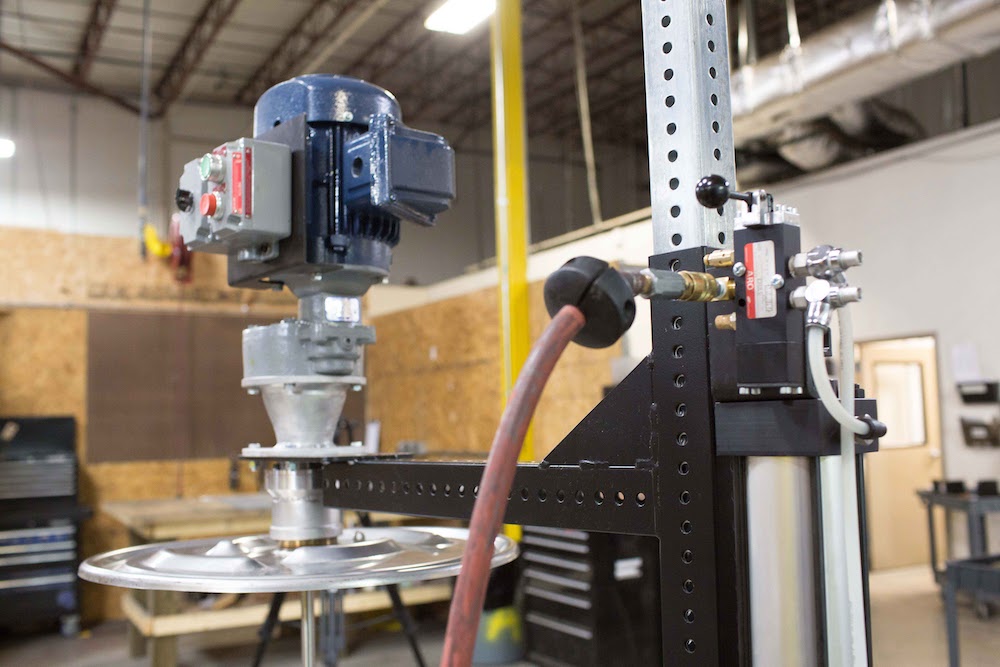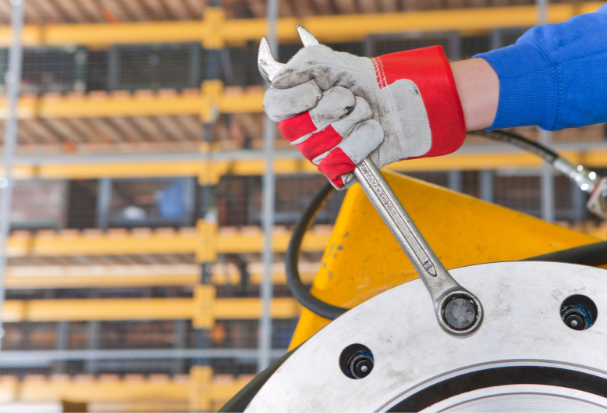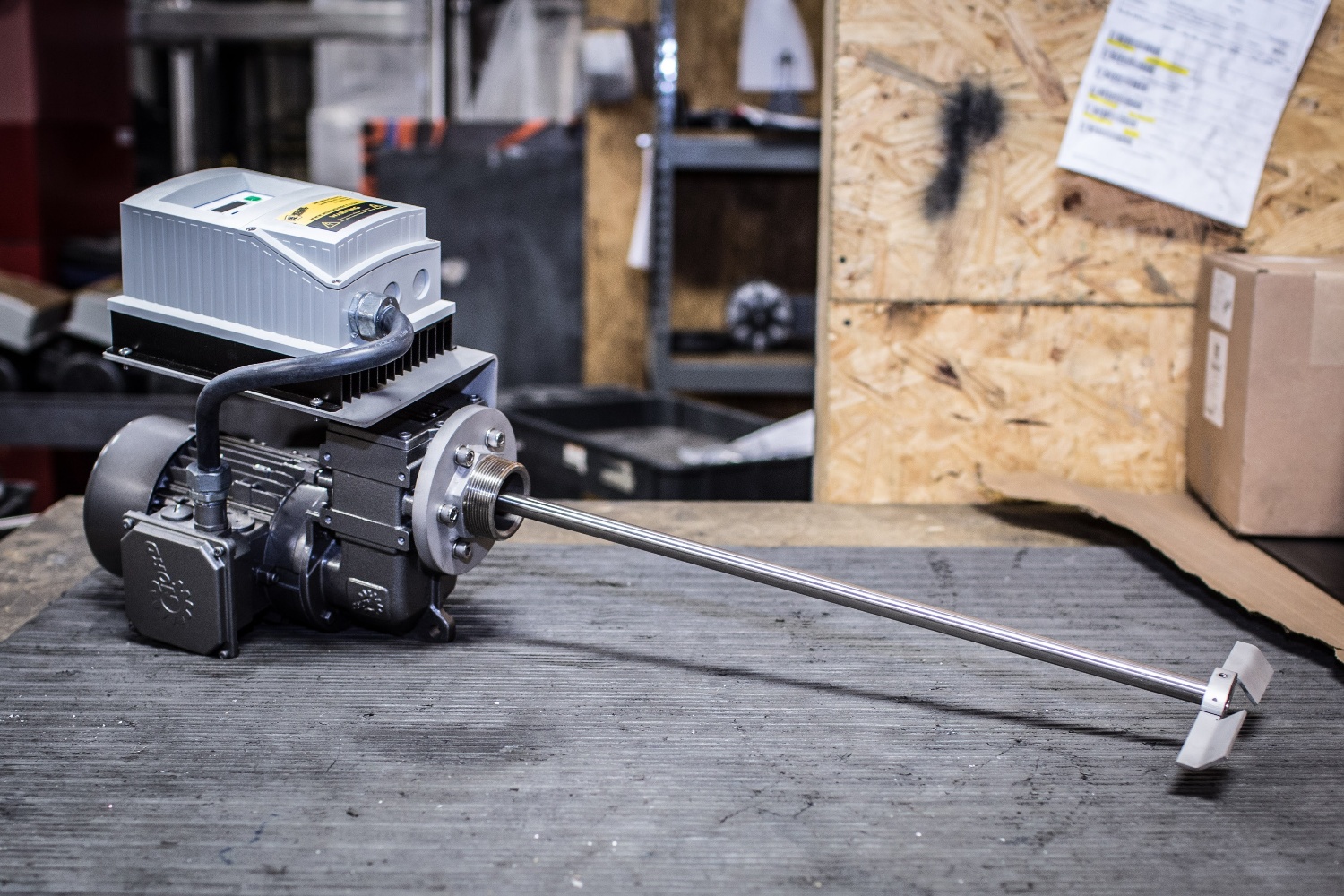Understanding Industrial Mixer Mounts & Stands
Once you have your impeller, motor, and shaft you’ll need to mount the mixer to the container or set up a stand where you can lower the mixer in and...
5 min read
Mixer Direct Jun 27, 2024 11:13:00 AM

Without industrial mixers, numerous industries would not have sufficient product to meet demand. The availability of both batch and continuous mixers provides the capability to create products on a large scale to sell to customers, maintaining delivery schedules and avoiding shortages.
Commercial mixers are crucial to production in various industries, including:
Here, we will get into an in-depth comparison between batch and continuous mixers. We will discuss the similarities and differences between the two mixer types and explain which industries rely on which type of mixer for ongoing success in production.
Industrial mixers combine, blend, or homogenize different materials to create a uniform mixture or product. Industrial mixers are used in various settings, from small-scale laboratory work to large-scale manufacturing processes.
These mixers are used to achieve consistent and efficient mixing of ingredients or components. Other reasons businesses rely on industrial mixers include:
Using an industrial mixer begins with loading ingredients into the vessel or tank either manually or via an automated system. From there, the mixing process begins as internal components — which can be blades, paddles or screws — move to combine the ingredients with one of three processes:
During this process, operators monitor and adjust parameters that include the speed, temperature, pressure, and time spent mixing. Once the mixing is complete, the product is removed and cleaning is completed between batches or production runs.
Batch mixers process materials in specified amounts (batches) and the batch size is limited by the size of the mixer. Batch mixers can achieve high uniformity with each batch and have the capability to easily adapt for new recipes or formulations. Some common types of batch mixers include:
Batch mixing treats each of the four steps separately, thereby finishing one ‘batch’ before starting another. Think about dough, for example. You would load all the ingredients appropriately and mix your dough. You’d remove the product from the tank and start the batch again.
Batch mixing usually benefits smaller operations, where ingredients can be handled and incorporated by hand. Batch mixing gives your operation more flexibility and precise control over each batch with controlled mixing times and traceability.
Some key industries that commonly use batch mixers include:
Batch mixers are popular in these industries for their flexibility in producing different formulations, ability to achieve high uniformity, and ease of cleaning between batches. However, it becomes uneconomical at a certain point when your operation grows and requires larger quantities of ingredients and increased manual labor.
Continuous mixing works by having a system in place that continually feeds ingredients into the mixer at one end and discharges the final product at the other end. The system is programmed to deliver ingredients and mix at the appropriate rate. These systems utilize multiple controls like valves, feeders and scales to automate a continual output.
Large operations will benefit from continuous mixing due to shorter mixing times and higher output capacity. There is less manual labor involved because of the automation controls in place, saving on manpower and allowing for better allocation of time.
Examples of continuous mixers include:
In applications where strict batch integrity is critical, the implementation of continuous systems can offer high levels of control over ingredient dosing and processing. While continuous mixing offers less flexibility for recipe changes than in batch mixing, adjustments can be made to meet your changing process needs.
Below are some industries that commonly use continuous mixers:
Batch and continuous processes achieve the same result in terms of uniformity. These mixing processes both also have to be monitored carefully in terms of temperature and mixing speed to make sure the product quality and consistency are maintained over the production of multiple batches.
Meanwhile, comparing batch vs. continuous process involves weighing several factors that are different based on the mixing approach that is used. These include:
Sometimes production processes need to be re-evaluated. If you are looking to improve or scale your mixing processes, installing the right mixer is a key adjustment. When choosing the the right option in a matter of batch versus continuous process, the following factors should be strongly considered:
|
Traceability |
When an issue arises with a product, it can be more challenging to trace the problem with continuous mixing. This can cause bigger problems in terms of recalls. With batch mixing, the problem is kept within a certain segmentation of the product and recalls can be scoped more effectively. |
|
Flexibility and Scalability |
Batch mixing does not provide much opportunity for increasing scale, although it is easier to adjust recipes and ingredient amounts for each batch. Meanwhile, it is easier to scale production with continuous mixers but not to adjust the timing of ingredient additions (or the amounts) with precision. |
|
Cost Considerations |
Continuous mixers tend to have a higher initial cost for setup due to the system complexity and automation costs. However, these systems tend to save money in the long run. In contrast, batch mixers have a lower initial cost but may require additional equipment and therefore space in the facility. Also, batch mixers require more manual intervention and therefore may rack up costs in terms of manpower. |
|
Quality Control |
Batch mixing provides control over ingredient amounts and production timing for each batch. With continuous mixing, the process of adding additional ingredients and timing the completion of certain portions of the production is more flexible. This is not ideal for some products. |
|
Changeover |
Due to the nature of batch mixing, changing production in terms of ingredients is easily accomplished. If changes are required for continuous mixing, that typically involves downtime and additional manpower beyond what is normally required for monitoring purposes. |
|
Continuous mixers tend to struggle with different viscosities, while batch mixers are more efficient at handling mixtures that combine ingredients of varied viscosity. |
Industrial mixers improve efficiency and provide the best methods to produce sufficient product to meet high demand. However, the choice of batch mixer versus continuous mixer involves more than meeting the demand. It requires considering the ingredients to be mixed, how often adjustments will need to be made and the floor space within your facility, among other things.
For a discussion of which type of mixer might be best based on your requirements, contact our experts.
(Editor's note: This blog was originally published in April 2022 and was updated in June 2024 to reflect the most current information.)

Once you have your impeller, motor, and shaft you’ll need to mount the mixer to the container or set up a stand where you can lower the mixer in and...

Imagine two cars, both the same make and model, driving down the highway. One car is well-maintained, with regular oil changes, tune-ups, and tire...

Portable mixers are a staple for liquid mixing and suspending solids in a host of different industries around the world. These workhorses can be...